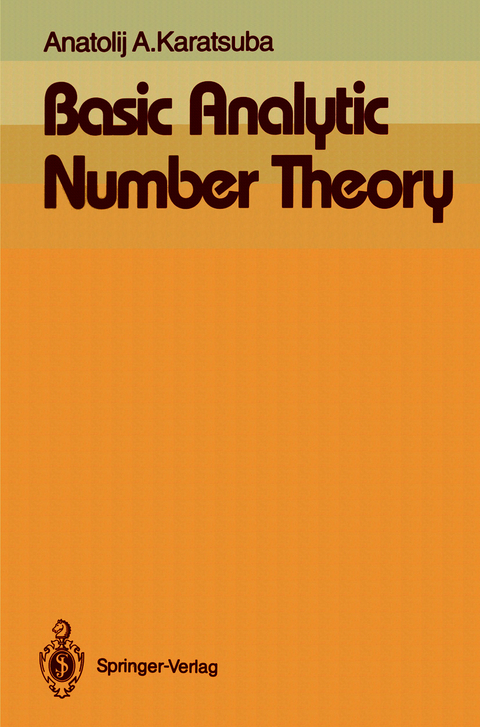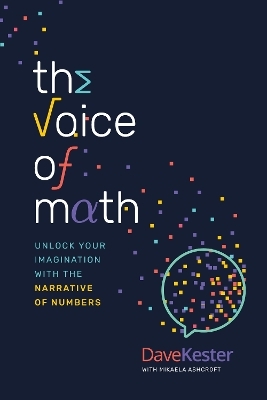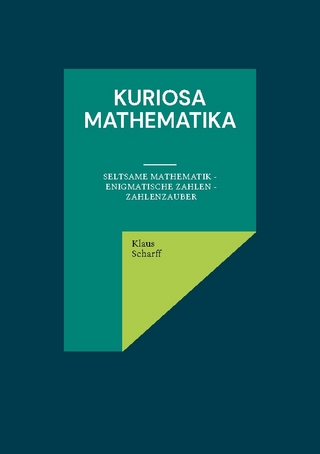
Basic Analytic Number Theory
Springer Berlin (Verlag)
978-3-642-63436-9 (ISBN)
Analytic number theory contains many clever and deep "tricks", some of which are used quite frequently. Karatsuba's book presents the fundamental techniques and their applications to four central problems. These methods are the basic tools of analytic number theory and are widely used. Thus, this book will be useful to both students and researchers.
I. Integer Points.-
1. Statement of the Problem, Auxiliary Remarks, and the Simplest Results.-
2. The Connection Between Problems in the Theory of Integer Points and Trigonometric Sums.-
3. Theorems on Trigonometric Sums.-
4. Integer Points in a Circle and Under a Hyperbola.- Exercises.- II. Entire Functions of Finite Order.-
1. Infinite Products. Weierstrass's Formula.-
2. Entire Functions of Finite Order.- Exercises.- III. The Euler Gamma Function.-
1. Definition and Simplest Properties.-
2. Stirling's Formula.-
3. The Euler Beta Function and Dirichlet's Integral.- Exercises.- IV. The Riemann Zeta Function.-
1. Definition and Simplest Properties.-
2. Simplest Theorems on the Zeros.-
3. Approximation by a Finite Sum.- Exercises.- V. The Connection Between the Sum of the Coefficients of a Dirichlet Series and the Function Defined by this Series.-
1. A General Theorem.-
2. The Prime Number Theorem.-
3. Representation of the Chebyshev Functions as Sums Over the Zeros of the Zeta Function.- Exercises.- VI. The Method of I.M. Vinogradov in the Theory of the Zeta Function.-
1. Theorem on the Mean Value of the Modulus of a Trigonometric Sum.-
2. Estimate of a Zeta Sum.-
3. Estimate for the Zeta Function Close to the Line ? = 1.-
4. A Function-Theoretic Lemma.-
5. A New Boundary for the Zeros of the Zeta Function.-
6. A New Remainder Term in the Prime Number Theorem.- Exercises.- VII. The Density of the Zeros of the Zeta Function and the Problem of the Distribution of Prime Numbers in Short Intervals.-
1. The Simplest Density Theorem.-
2. Prime Numbers in Short Intervals.- Exercises.- VIII. Dirichlet L-Functions.-
1. Characters and their Properties.-
2. Definition of L-Functions and their Simplest Properties.-
3. TheFunctional Equation.-
4. Non-trivial Zeros; Expansion of the Logarithmic Derivative as a Series in the Zeros.-
5. Simplest Theorems on the Zeros.- Exercises.- IX. Prime Numbers in Arithmetic Progressions.-
1. An Explicit Formula.-
2. Theorems on the Boundary of the Zeros.-
3. The Prime Number Theorem for Arithmetic Progressions.- Exercises.- X. The Goldbach Conjecture.-
1. Auxiliary Statements.-
2. The Circle Method for Goldbach's Problem.-
3. Linear Trigonometric Sums with Prime Numbers.-
4. An Effective Theorem.- Exercises.- XI. Waring's Problem.-
1. The Circle Method for Waring's Problem.-
2. An Estimate for Weyl Sums and the Asymptotic Formula for Waring's Problem.-
3. An Estimate for G(n).- Exercises.- Hints for the Solution of the Exercises.- Table of Prime Numbers < 4070 and their Smallest Primitive Roots.
| Erscheint lt. Verlag | 14.10.2012 |
|---|---|
| Übersetzer | M.B. Nathanson |
| Zusatzinfo | XIII, 222 p. |
| Verlagsort | Berlin |
| Sprache | englisch |
| Maße | 155 x 235 mm |
| Gewicht | 370 g |
| Themenwelt | Mathematik / Informatik ► Mathematik ► Arithmetik / Zahlentheorie |
| Mathematik / Informatik ► Mathematik ► Wahrscheinlichkeit / Kombinatorik | |
| Schlagworte | Analytic number theory • Analytische Zahlentheorie • distribution of prime numbers • Goldbach's Problem • Number Theory • Prime • Prime number • The Circle Method • Waring's Problem |
| ISBN-10 | 3-642-63436-2 / 3642634362 |
| ISBN-13 | 978-3-642-63436-9 / 9783642634369 |
| Zustand | Neuware |
| Haben Sie eine Frage zum Produkt? |
aus dem Bereich


